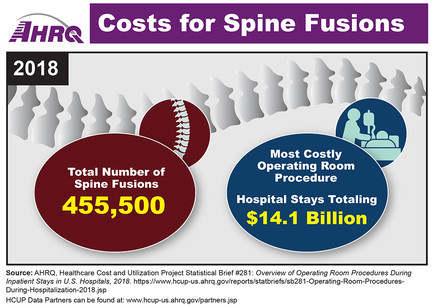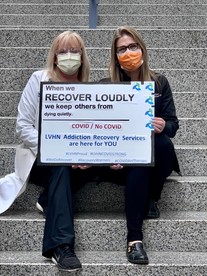| November 16, 2021, Issue #789  Access more data on this topic in the associated statistical brief, plus additional AHRQ data infographics. Individualized, tailored patient engagement and resources to support providers can optimize interventions for high-need, high-cost patients, a new AHRQ report has found. The review assessed criteria that identify high-need, high-cost (HNHC) patients, developed theories on how to optimize interventions for HNHC patients and assessed the effectiveness of interventions. HNHC patients are defined as a very small number of patients who account for disproportionately high healthcare use and cost. The report found that HNHC patients often had multiple chronic conditions, a history of inappropriately high use of costly healthcare services, mental health conditions and social risk factors (such as homelessness). It also found that models based in the emergency department (ED) resulted in a reduction in all-cause ED visits, while ED- and primary care-based models resulted in a reduction of all-cause admissions. Continuity of care is associated with improved outcomes for elderly men with prostate cancer, according to an AHRQ-funded study published in The Prostate. Researchers found that higher continuity of care, defined as visits with a single provider or the same provider group, was associated with fewer emergency department visits and hospitalizations, lower cost of follow-up care, and reduced all-cause mortality among more than 167,000 fee-for-service Medicare beneficiaries diagnosed with prostate cancer between 2000 and 2011. Continuity was especially beneficial for African American men as compared with White men. Researchers said their study was the first to demonstrate the importance of continuity of care in acute survivorship phase in reducing racial disparity in patients with localized prostate cancer. They concluded that continuity of care was important when treating prostate cancer, the most common cancer among men, due to multiple treatment options available and prolonged disease history. Access the abstract. AHRQ's Patient Safety Network (PSNet) highlights journal articles, books and tools related to patient safety. Articles featured this week include: Review additional new publications in PSNet's current issue or access recent cases and commentaries in AHRQ's WebM&M (Morbidity and Mortality Rounds on the Web). AHRQ is among federal partners and stakeholders that have joined a new initiative to strengthen primary healthcare nationwide. The effort, launched by the HHS Office of the Assistant Secretary for Health (OASH), follows a National Academies of Sciences, Engineering, and Medicine report that documented the weakening of primary care and called upon HHS to take a leadership role in ensuring high-quality primary care for all. Judith Steinberg, M.D., M.P.H., a leader in primary healthcare transformation and former chief medical officer in the Bureau of Primary Health Care at the Health Resources & Services Administration, will lead development of an HHS plan to strengthen primary healthcare with the aim of improving health outcomes and advancing health equity. The plan, which will be presented to HHS Secretary Xavier Becerra for his review, will include the role of HHS in leading this effort and specific actions to be taken across HHS. AHRQ's contributions will reflect its role as a principal source of funding for primary care research and home for the National Center for Excellence in Primary Care Research, which provides evidence, tools and other resources for researchers, clinical teams, quality improvement experts and others to improve the quality and safety of primary care.  The Lehigh Valley Health Network (LVHN) used an AHRQ-funded grant initiative to expand Medication-Assisted Treatment (MAT) for opioid use disorders in Pennsylvania. Primary care providers are using MAT to treat opioid use disorders with great success. Approximately 72 percent of the LVHN's patients remain in treatment after 120 days; 65 percent remain after 180 days. Nationally, just 20 percent to 30 percent of patients usually remain in treatment by 120 to 180 days. Access the AHRQ Impact Case Study. (Pictured at left: LVHN certified recovery specialists Paige Roth and Holly Maddox.) | | AHRQ in the Professional Literature Consequences of rapid telehealth expansion in nursing homes: promise and pitfalls. Powell KR, Alexander GL. Appl Clin Inform. 2021 Aug;12(4):933-43. Epub 2021 Oct 6. Access the abstract on PubMed®. Tracking the nonenrolled: lung cancer screening patterns among individuals not accrued to a clinical trial. Gerber DE, Hamann HA, Chavez C, et al. Clin Lung Cancer. 2020 Jul;21(4):326-32. Epub 2020 Feb 26. Access the abstract on PubMed®. Laws mandating coprescription of naloxone and their impact on naloxone prescription in five US States, 2014-2018. Green TC, Davis C, Xuan Z, et al. Am J Public Health. 2020 Jun;110(6):881-7. Epub 2020 Apr 16. Access the abstract on PubMed®. Keeping risk in context while rethinking the setting of asthma biologics in patient-centered care. Greenhawt M, Shaker M. Ann Allergy Asthma Immunol. 2020 Aug;125(2):124-5. Epub 2020 Jun 1. Access the abstract on PubMed®. Methods for estimating the cost of treat-and-release emergency department visits. Pickens GT, Moore B, Smith MW, et al. Health Serv Res. 2021 Oct;56(5):953-61. Epub 2021 Aug 5. Access the abstract on PubMed®. Emerging models of care for individuals with multiple chronic conditions. Savitz LA, Bayliss EA. Health Serv Res. 2021 Oct;56(Suppl 1):980-9. Epub 2021 Aug 13. Access the abstract on PubMed®. Duration of medical home participation and quality of care for patients with chronic conditions. Swietek KE, Domino ME, Grove LR, et al. Health Serv Res. 2021 Oct;56(Suppl 1):1069-79. Epub 2021 Aug 17. Access the abstract on PubMed®. User-centered design of a scalable, electronic health record-integrated remote symptom monitoring intervention for patients with asthma and providers in primary care. Rudin RS, Perez S, Rodriguez JA, et al. J Am Med Inform Assoc. 2021 Oct 12;28(11):2433-44. Access the abstract on PubMed®. Contact Information For comments or questions about AHRQ News Now, contact Bruce Seeman, (301) 427-1998 or Bruce.Seeman@ahrq.hhs.gov. |





No comments:
Post a Comment